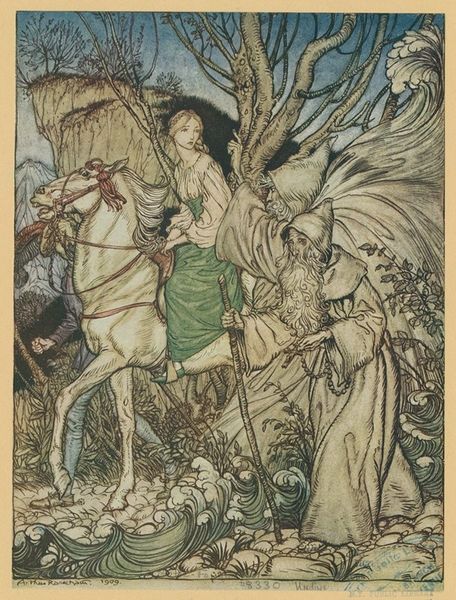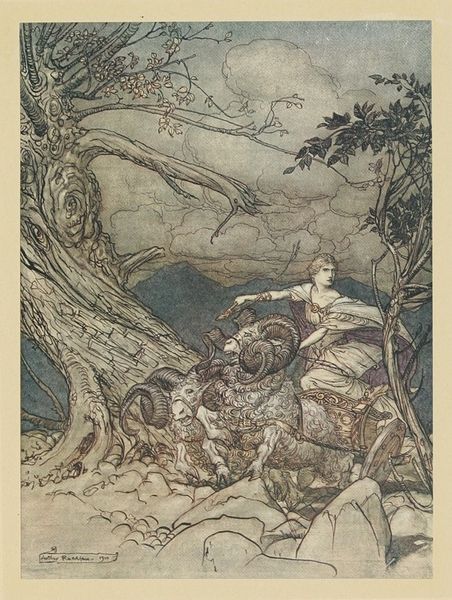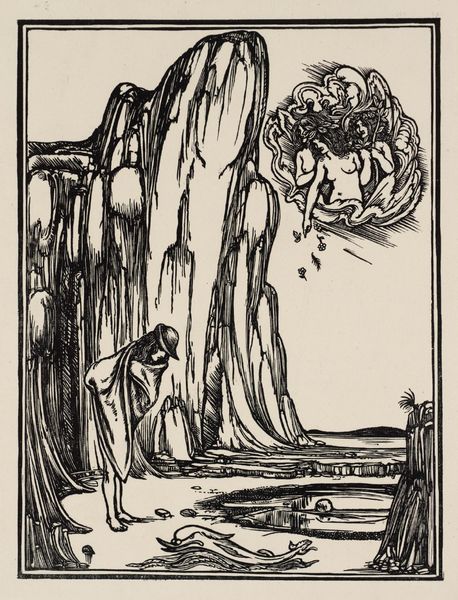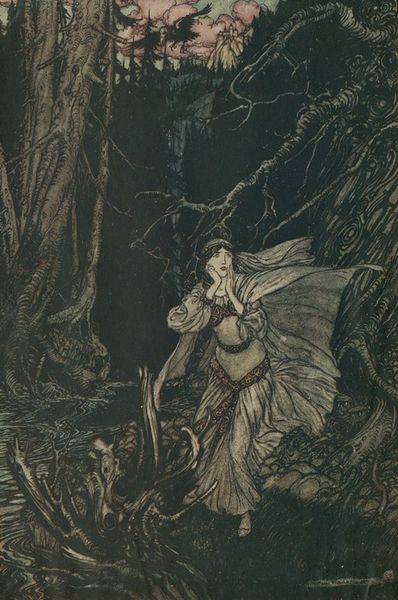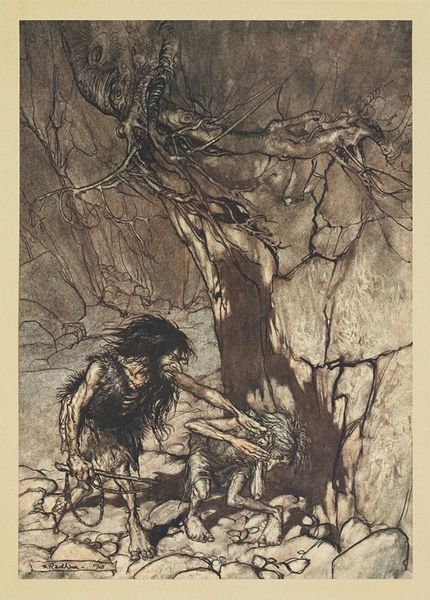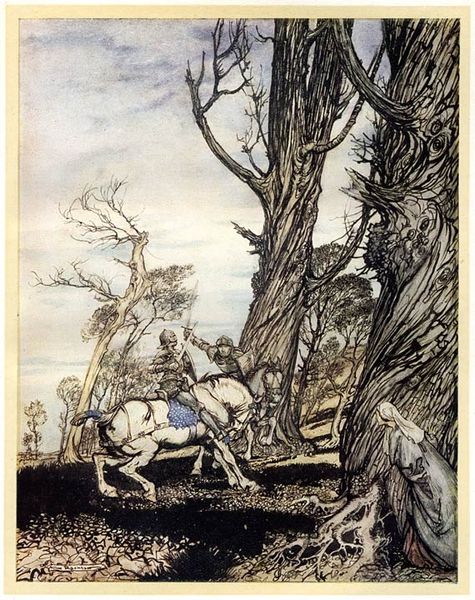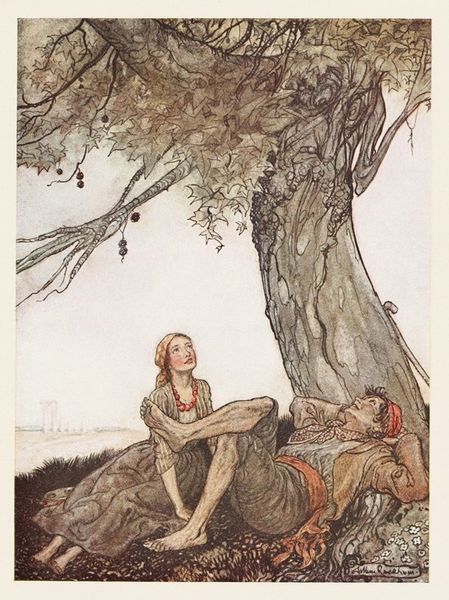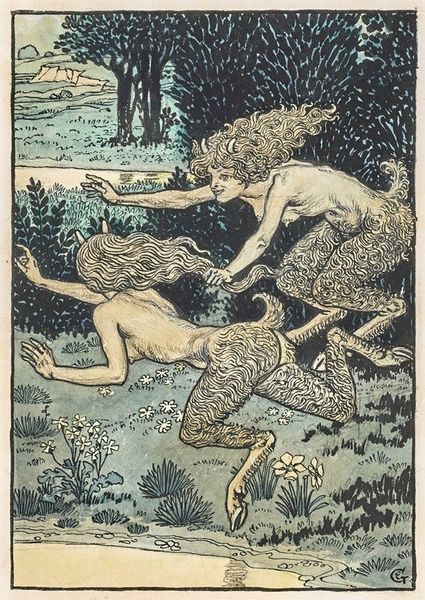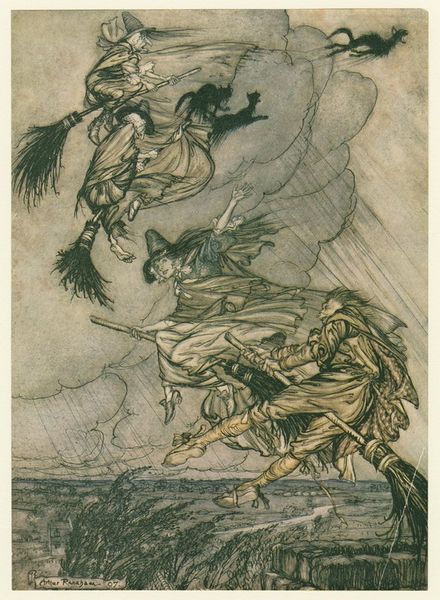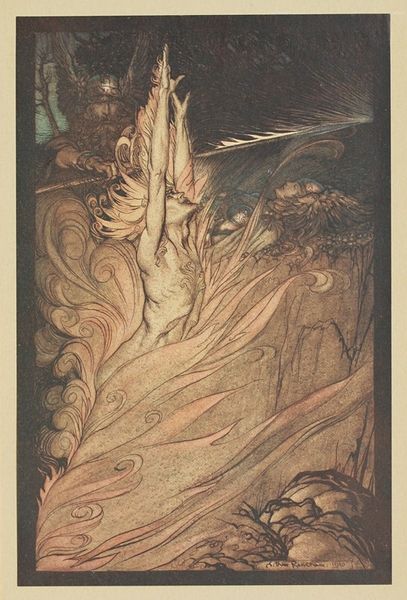
watercolor
#
landscape
#
fantasy-art
#
figuration
#
charcoal art
#
watercolor
#
symbolism
#
watercolour illustration
#
watercolor
Copyright: Public Domain: Artvee
Curator: Immediately, there’s a sinister allure; it’s haunting, unsettling. The lines are so fine, yet they conjure a world teeming with secrets. Editor: Yes, it's quite a piece. This watercolour and ink work is "The Rhine’s pure-gleaming children told me of their sorrow" by Arthur Rackham, created around 1910. Rackham was deeply entrenched in the symbolist movement. Curator: The title suggests a narrative. The watermaidens…Naiads, perhaps, they seem to plead or offer something to that figure perched above the water. It resonates with older myths and legends. Are they figures of temptation, warning of a dark fate? Editor: Rackham illustrated many folk tales and myths, and this piece connects directly to Wagner's Ring Cycle. It represents the Rhinemaidens interacting with Alberich, the dwarf who steals the Rheingold, setting off the cycle's events. The socio-political tensions regarding industrialisation’s impact on nature deeply influenced Wagner, and subsequently Rackham. Curator: That adds so much depth! The Rhinegold becomes not just gold, but a symbol for nature exploited. Look at the dark tones of the forest behind, almost oppressive compared to the gleaming skin of the maidens. It highlights the clash of worlds. Even the seated figure seems… constricting. Is he the one poisoning the landscape? Editor: Indeed, Alberich's posture is stiff, almost unnatural, embodying a twisted domination. The delicate watercolours give way to sharp, almost cruel lines detailing his features. This characterisation reflects the anxieties of the era regarding the abuse of power through new industrial means. Rackham used these mythical images to express contemporary unease. Curator: This piece feels so relevant even now. We see similar struggles echoed in contemporary ecological activism. Editor: Absolutely. Rackham uses these well-known stories to create visual commentary relevant to societal problems. It ensures enduring impact and resonance. I found viewing it from a socio-political framework greatly enriched my interpretation. Curator: And, for me, it is always so fascinating to explore art through symbolism. Understanding Rackham’s symbolic language opens a gateway into early 20th-century anxieties. The dialogue between light and darkness still lingers today, provoking much thought about our relationship with the world around us.
Comments
No comments
Be the first to comment and join the conversation on the ultimate creative platform.


